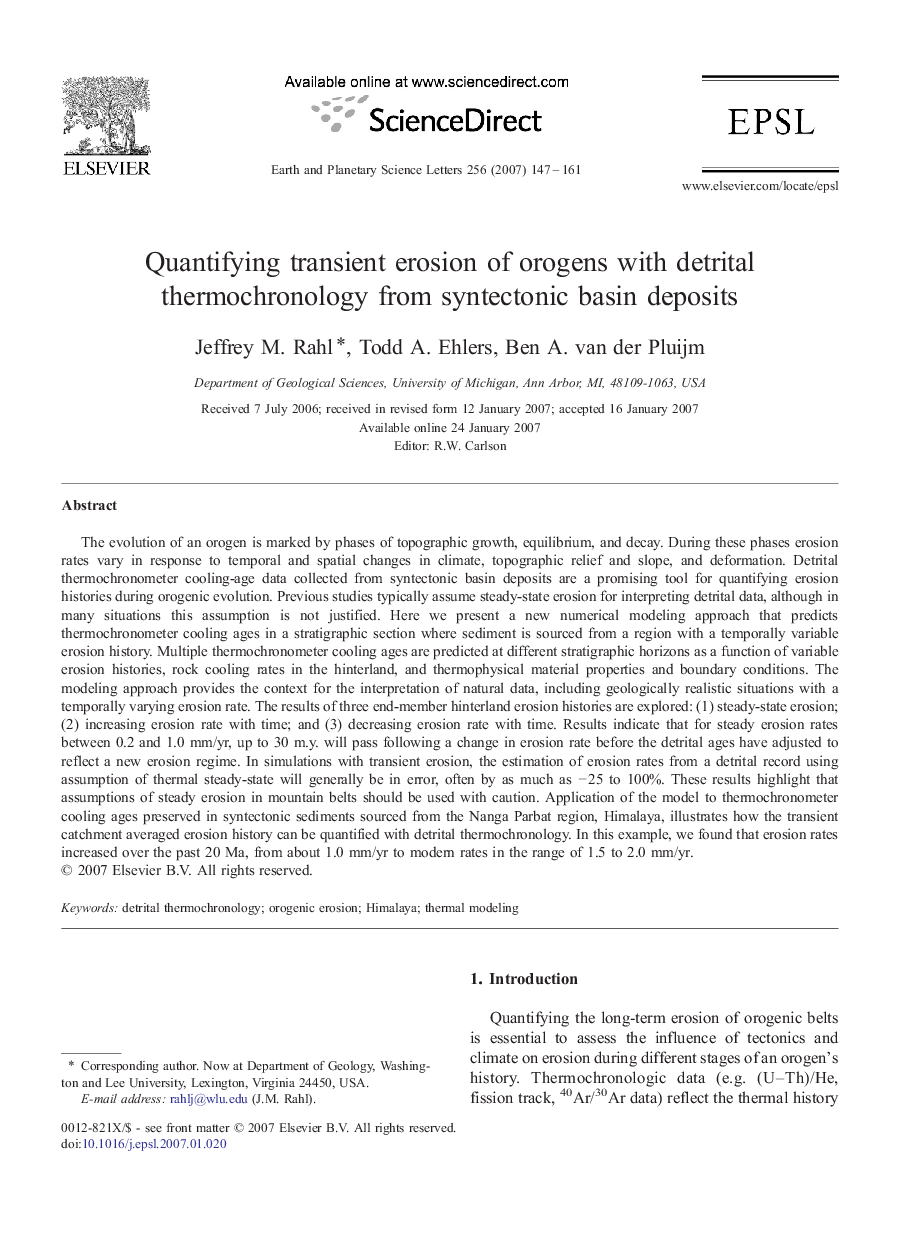| کد مقاله | کد نشریه | سال انتشار | مقاله انگلیسی | نسخه تمام متن |
|---|---|---|---|---|
| 4680474 | 1634923 | 2007 | 15 صفحه PDF | دانلود رایگان |

The evolution of an orogen is marked by phases of topographic growth, equilibrium, and decay. During these phases erosion rates vary in response to temporal and spatial changes in climate, topographic relief and slope, and deformation. Detrital thermochronometer cooling-age data collected from syntectonic basin deposits are a promising tool for quantifying erosion histories during orogenic evolution. Previous studies typically assume steady-state erosion for interpreting detrital data, although in many situations this assumption is not justified. Here we present a new numerical modeling approach that predicts thermochronometer cooling ages in a stratigraphic section where sediment is sourced from a region with a temporally variable erosion history. Multiple thermochronometer cooling ages are predicted at different stratigraphic horizons as a function of variable erosion histories, rock cooling rates in the hinterland, and thermophysical material properties and boundary conditions. The modeling approach provides the context for the interpretation of natural data, including geologically realistic situations with a temporally varying erosion rate. The results of three end-member hinterland erosion histories are explored: (1) steady-state erosion; (2) increasing erosion rate with time; and (3) decreasing erosion rate with time. Results indicate that for steady erosion rates between 0.2 and 1.0 mm/yr, up to 30 m.y. will pass following a change in erosion rate before the detrital ages have adjusted to reflect a new erosion regime. In simulations with transient erosion, the estimation of erosion rates from a detrital record using assumption of thermal steady-state will generally be in error, often by as much as − 25 to 100%. These results highlight that assumptions of steady erosion in mountain belts should be used with caution. Application of the model to thermochronometer cooling ages preserved in syntectonic sediments sourced from the Nanga Parbat region, Himalaya, illustrates how the transient catchment averaged erosion history can be quantified with detrital thermochronology. In this example, we found that erosion rates increased over the past 20 Ma, from about 1.0 mm/yr to modern rates in the range of 1.5 to 2.0 mm/yr.
Journal: Earth and Planetary Science Letters - Volume 256, Issues 1–2, 15 April 2007, Pages 147–161